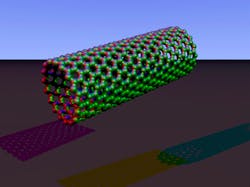NIOSH Issues Recommendations for Limiting Worker Exposure to Nanomaterials in Manufacturing
The National Institute for Occupational Safety and Health has issued new recommendations for controlling worker exposure to engineered nanomaterials in manufacturing.
The recommendations are based on technologies now applied in the various industries that use nanomaterials, and on control methods that have been shown to be effective in reducing occupational exposures in other industries, according to NIOSH.
The recommendations are detailed in a new document called "Current Strategies for Engineering Controls in Nanomaterial Production and Downstream Handling Processes."
"As we continue to work with diverse partners to study the health effects produced by exposure to nanomaterials, particularly as new materials and products continue to be introduced, it is prudent to protect workers now from potential adverse health outcomes," said NIOSH Director John Howard. "These recommendations represent the kind of science-based guidance that our partners have requested, as a vital component for supporting the safe growth of nanotechnology and U.S. leadership in the global market."
The NIOSH guidance favors engineering controls over administrative controls and PPE for lowering worker exposures, "because they are designed to remove the hazard at the source, before it comes into contact with the worker," the agency said in a news release.
There's been little evidence showing the effectiveness of controls during the manufacture and downstream use of engineered nanomaterials in specific applications, NIOSH added.
"The NIOSH recommendations fill a gap for science-based guidance that employers and workers can apply now, as research continues for better understanding of nanomaterial characteristics, and ways in which workers may be exposed, that may pose the risk of adverse health effects," the agency said.
Processes discussed in the document include reactor operations and cleanout processes; small-scale weighing and handling of nanopowders; intermediate and finishing processes; and maintenance tasks.
The document also includes recommendations for evaluating the performance of control technologies and control systems.
The consumer-products market has more than 1,000 nanomaterial-containing products, including makeup, sunscreen, food-storage products, appliances, clothing, electronics, computers, sporting goods, and coatings, according to NIOSH.
As more nanomaterials are introduced into the workplace and nano-enabled products enter the market, the NIOSH document emphasizes the importance of producers and users to ensure a safe and healthy work environment.
